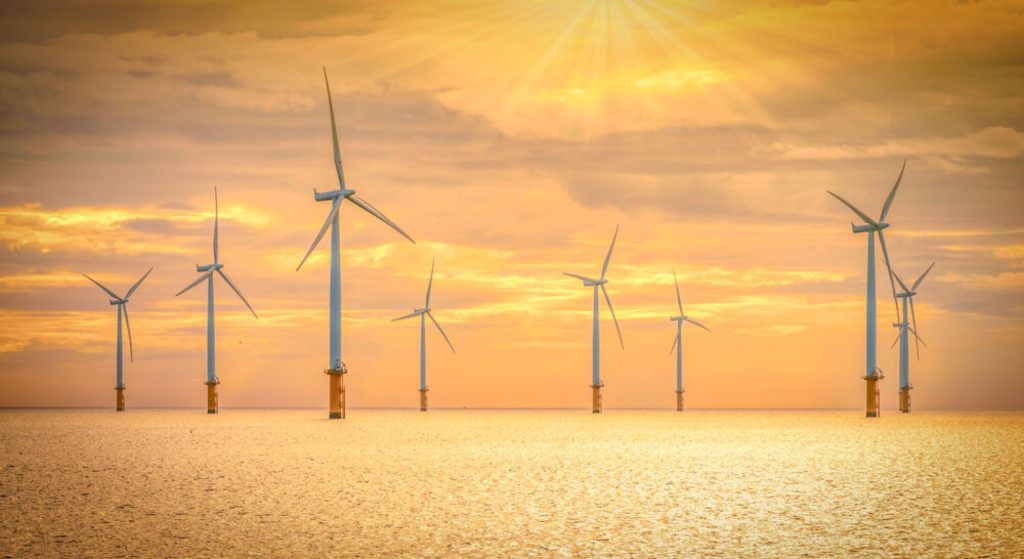TRENTON – Gov. Phil Murphy has signed three more executive orders, which have the combined effect of accelerating New Jersey’s already rapid schedule for attaining 100% clean energy use. He did so as several public officials in shore communities have called for a pause in the offshore wind initiative and as some state business leaders worry that these actions by Murphy carry no analysis of the ultimate cost to residents and businesses.
Murphy gave a major climate action speech Feb. 15 at Rutgers University. In that speech, he emphasized the state’s “commitment to swift and concrete climate action today.”
Murphy spoke of a “greener tomorrow” achieved by unwavering adherence to a “pragmatic, evidence-based approach” to “robust climate adaptation and mitigation efforts.”
The speech elicited cheers from environmental groups and pushback from those who fear the state is moving too fast and, for some, recklessly.
Step On It
In September 2022, Murphy signed Executive Order (EO) 307, increasing the capacity goals for offshore wind from 7,500 megawatts to 11,000 megawatts before even the first wind turbine has been constructed, which represented an almost 50% increase in projected capacity.
It came when the state’s overall goals were to hit 50% clean energy by 2030 and 100% by 2050.
Now, just five months later, Murphy issued Executive Order 315 Feb. 15, recalibrating the state’s goals as 100% of electricity sold in the state coming from clean sources by Jan. 1, 2035, which is a goal for 100% clean energy electricity sources in 12 years.
The acceleration of the state’s targets is happening much faster than the realities surrounding the alternative energy projects underway. The result is an all-out effort that cannot afford to slow down for any potential unintended consequence.
Just two days after Murphy’s speech, the New Jersey Board of Public Utilities (NJBPU) approved Ocean Wind developer Ørsted’s petition for easements and permits that Cape May County had refused to issue.
Similar action had already taken place with respect to objections raised by Ocean City’s governing body concerning the route transmission cables may take to carry energy from the wind farms to a grid junction in Beesley’s Point. Traditions of home rule, especially with respect to land use regulations, cannot withstand the all-out push for alternative energy now.
Concerns that a spate of whale deaths are being caused by offshore wind pre-construction activities have led to numerous calls for a pause in work while environmental impacts are definitively addressed. The response is an acceleration of the schedule, creating an absolute need for more offshore wind energy earlier. That was the effect of EO 307 in September 2022.
The release of a recent poll on beliefs and attitudes toward climate change by the Yale Program on Climate Change Communications concludes that 70% of Americans believe that global warming is occurring, and more than half of all Americans believe it is caused, in large part, by human actions. The concern about climate change is increasing, as is the sense that actions need to be taken to combat it, but the sense that urgent and comprehensive action is needed immediately has less consensus.
Murphy’s 6 Pillars
Murphy’s speech outlines six “pillars” that will serve as a foundation for a “greener, more resilient New Jersey.” The impact of each of them is significant:
The first was the acceleration of the clean energy target by 2035 instead of 2050. It shaves 15 years off what was already an ambitious goal. State Sen. Anthony Bucco (R-25th) calls the new target “nuts.”
While some would be less colorful in their characterization, there is pushback on the goal that is only 12 years in the future.
The New Jersey Business and Industry Association has expressed concern over the logistics and costs of the accelerated schedule. The major concern voiced by business leaders is that there is no sense of cost attached to the plans.
The governor’s action has also elicited strong support from a number of groups like the Sierra Club, who feel his earlier goals are not equal to the dangers posed by climate change.
In the second of his pillars, Murphy is setting a new target for zero-carbon-emission space heating and cooling systems in 400,000 homes and 20,000 commercial properties by 2030.
EO 316 that promulgates this goal also calls for 10% of all low-to-moderate income (LMI) properties to be electrification-ready in the same time period.
A 2022 study by the American Council for an Energy-Efficient Economy (ACEEE) lauds the concept of decarbonizing affordable housing but finds no working examples where such a program is serving large customer populations. The study also raises the question of the unknown costs associated with such an effort.
Third among Murphy’s pillars is EO 317, calling for a plan for “the Future of the Natural Gas Utility in New Jersey.” The governor calls on the NJBPU to plot the state’s shift away from fossil fuels and their impact on utilities. Murphy wants to be sure natural gas is available in sufficient quantities to meet needs as the transition occurs and the customer base for natural gas shrinks.
The fourth pillar in the governor’s speech allocates $70 million in unobligated Regional Greenhouse Gas Initiative (RGGI) auction proceeds toward lowering the upfront costs of medium- and heavy-duty electric vehicle adoption. The concept is to make adoption of these vehicles more accessible as part of the effort to move what are primarily diesel vehicles off the roadways.
In the fifth pillar, Murphy calls for a process that will require all new cars and light-duty truck sales be zero-emission vehicles by 2035.
As of nine months ago, New Jersey had a little over 80,000 electric vehicles, or about 1% of the 6 million total vehicles registered.
At the county level, Cape May County has the second lowest number of registered electric cars and light-duty trucks in the state.
The desired shift to electric vehicles by 2035 and the infrastructure to support that shift represent very ambitious goals.
The final or sixth pillar states that New Jersey Protection Against Climate Threats (NJPACT) Resilient Environments and Landscapes (REAL) rule proposals will be out by summer 2023.
The goal is to provide “enhanced flood protection for homeowners, businesses and infrastructure against increased flooding in riverine and coastal areas.”
The impact on home development along the coast is the big unknown, and the area where this pillar could most impact Cape May County.
The Devil is in the Details
While Murphy’s speech was generally seen as an aggressive attempt to address climate change, some environmental groups like Food and Water Watch New Jersey express concern that he is not moving fast enough in an environment where fossil fuel projects are still lining up for approval.
Clean Water Action called on Murphy to move faster toward a “truly equitable green economy future.”
For Murphy, the details that will now flow from the six pillars he outlined must be up to the challenge of his ambitious goals. One example demonstrates the point.
A rapid increase in electric-only vehicles over just 12 years raises serious questions about the charging infrastructure for the vehicles. The even bigger question is what will source the tremendous rise in the need for electricity? Will the increase in clean power and the capacity of the grid to deliver it be up to the challenge of the electric-only vehicles goal?
There is also the ongoing issue of the governor’s tendency to issue EOs without supporting legislation or funding mechanisms.
Finally, there is the fact that Murphy will no longer be governor by the time even these ambitious dates arrive. Murphy recognizes the need to codify these goals in legislation, but that may be easier said than done.
Thoughts? Questions? Contact the author, Vince Conti, at vconti@cmcherald.com.








